Experimental Analysis of Space Trusses Using Spacers of Concrete with Steel Fiber and Sisal Fiber
Abstract
:1. Introduction
2. Collapses in Space Truss and Eccentricity Correction
2.1. Correction of Eccentricity in Typical Connections
2.2. Application of Fiber-Reinforced Concrete
3. Experimental Program and Methods
3.1. Materials Used for Construction of the Spacers
3.2. Steel Fiber and Sisal Fiber
3.3. Experimental Test of the Concrete
3.4. Procedures and Instrumentation of the Space Truss Experiments
4. Results of Experimental Tests
5. Conclusions
- Spacers can efficiently prevent the premature collapse of space trusses with typical connections,
- The use of spacers of the concrete mixed with steel fiber not encapsulated did not resist the high stress in the connection and radial cracks were observed at failure, and
- Space trusses with spacers of encapsulated concrete mixed with steel fiber showed 36% greater load capacity compared to space trusses with typical connections with no eccentricity correction.
Author Contributions
Funding
Acknowledgments
Conflicts of Interest
References
- Makowski, Z.S.; Ramaswamy, G.S.; Eekhout, M.; Suresh, G.R. Book Review: Analysis, Design and Construction of Steel Space Frames. Int. J. Space Struct. 2002, 17, 243. [Google Scholar] [CrossRef]
- Koushky, A.; Dehdashti, G.; Fiouz, A. Nonlinear Analysis of Double-Layer Grids with Compositive Nodes under Symmetric and Unsymmetrical Gravity Loads. Int. J. Space Struct. 2007, 22, 133–140. [Google Scholar] [CrossRef]
- Makowski, Z.S. Estructuras Espaciales de Acero, 2nd ed.; Editorial Gustavo Gili: Barcelona, Spain, 1972. [Google Scholar]
- Gioncu, V. Instability Problems in Space Structures. Int. J. Space Struct. 1985, 1, 169–183. [Google Scholar] [CrossRef]
- Makoswski, Z.S. A worldwide review of space structures in sports buildings. Bull. Int. Assoc. Shell Spat. Struct. 1988, 29, 11–40. [Google Scholar]
- Hanaor, A. Characteristics of Prefabricated Spatial Frame Systems. Int. J. Space Struct. 1995, 10, 151–173. [Google Scholar] [CrossRef]
- Chilton, J. Space Grid Structures; Architectural Press: London, UK, 2007. [Google Scholar]
- Kato, S.; Kim, J.-M.; Cheong, M.-C. A new proportioning method for member sections of single layer reticulated domes subjected to uniform and non-uniform loads. Eng. Struct. 2003, 25, 1265–1278. [Google Scholar] [CrossRef]
- De Souza, A.S.C. Análise Teórica e Experimental de Treliças Espaciais. Ph.D. Thesis, Universidade de Sao Paulo, de Sao Paulo, Brazil, 2003. [Google Scholar]
- Li, H.; Taniguchi, Y. Load-carrying capacity of semi-rigid double-layer grid structures with initial crookedness of member. Eng. Struct. 2019, 184, 421–433. [Google Scholar] [CrossRef]
- Lan, T.T. Space Frame Construction in China. Adv. Steel Struct. 1996, 4, 55–64. [Google Scholar] [CrossRef]
- Makowski, Z.S. Development of jointing systems for modular prefabricated steel space structures. Light. Struct. Civ. Eng. 2002, 1, 24–28. [Google Scholar]
- Bangash, M.; Bangash, T. Elements of Spatial Structures—Analysis and Design; Thomas Telford Ltd: New York, NY, USA, 2003; pp. 10017–12398. [Google Scholar]
- Aydincilar, Y. Optimum Design of Double-Layer Grid Systems: Comparison with Current Design Practice Using Real-Life Industrial Applications. Master’s Thesis, Middle East Technical University, Ankara, Turkey, 2010. [Google Scholar]
- Arekar, V.A.; Bhavsar, B.B. Analytical Study of MERO Connector in Double Layer Grid Structure. IJLTET 2013, 2, 35–42. [Google Scholar]
- Mengeringhausen, M. Rohbauwwise. Mero, SISTEMA KK Nodi Sferici e Aste Tubolari, Würzburg, Germany, 2014. [Google Scholar]
- Casanova, P.A.A. Estudo Numérico Experimental de Treliças Espaciais Feitas com Tubos de aço com ponta Amassada e Espaçadores de Madeira para Corrigir as Excentricidades nos nós de Ligação; Biblioteca Central da UNB: Brasilia, Brazil, 2018. [Google Scholar]
- El-Shami, M.; Mahmoud, S.; Elabd, M. Effect of floor openings on the capacity of composite space trusses. J. King Saud Univ. Eng. Sci. 2018, 30, 130–140. [Google Scholar] [CrossRef] [Green Version]
- Caglayan, B.O.; Yuksel, E. Experimental and finite element investigations on the collapse of a Mero space truss roof structure—A case study. Eng. Fail. Anal. 2008, 15, 458–470. [Google Scholar] [CrossRef]
- Ebadi, M.; Davoodi, M. Evaluate axial stiffness of the MERO connection, under the effect of hardening the screw. Int. J. Sci. Emerg. Technol. 2012, 4, 116–122. [Google Scholar]
- Piroglu, F.; Ozakgul, K. Partial collapses experienced for a steel space truss roof structure induced by ice ponds. Eng. Fail. Anal. 2016, 60, 155–165. [Google Scholar] [CrossRef]
- Tarczewski, R.; Motro, R. The Beauty of Technical Thought in Architecture—The Lifework of Stéphane Du Chateau. Int. J. Space Struct. 2015, 30, 203–220. [Google Scholar] [CrossRef]
- Dipaola, V.; Prete, G. “PREMIT” System for Space Reticulated Structures Part. I: Geometrical and Structural Definitions of the Construction System. Int. J. Space Struct. 2002, 18, 31–45. [Google Scholar] [CrossRef]
- Sampaio, T.S. Análise Numérica, via MEF, de Ligações em Treliças Metálicas Espaciais. Ph.D. Thesis, Universidade de Sao Paulo, de Sao Paulo, Brazil, 2004. [Google Scholar]
- Space Frame Roofs Collapse Hartford Coliseum Following Heavy Snowfalls; ENR: New York, NY, USA, 1978.
- Zetlin, L. Report of the Engineering Investigation Concerning the Causes of the Collapse of the Hartford Coliseum Space Truss Roof on January 18; Hartford Press: Hartford, CT, USA, 1978. [Google Scholar]
- Parke, G.A.R. The Behaviour of Space Trusses Incorporating Novel Compression Members. Ph.D. Thesis, University of Surrey, Guildford, UK, 1988. [Google Scholar]
- Fan, F.; Cao, Z.; Shen, S. Elasto-plastic stability of single-layer reticulated shells. Thin-Walled Struct. 2010, 48, 827–836. [Google Scholar] [CrossRef]
- Fu, F. Structural Analysis and Design to Prevent Disproportionate Collapse; CRC Press: Boca Raton, FL, USA, 2016. [Google Scholar]
- Dizdar, Ç.; Baran, E.; Topkaya, C. Strength and stiffness of floor trusses fabricated from cold-formed steel lipped channels. Eng. Struct. 2019, 181, 437–457. [Google Scholar] [CrossRef]
- Abedi, K.; Parke, G. Progressive Collapse of Single-Layer Braced Domes. Int. J. Space Struct. 1996, 11, 291–306. [Google Scholar] [CrossRef]
- Papadopoulos, C.M.; Loricco, M.T. A Case Study of Symmetry-Adapted Computation: Analysis of the Bucharest Dome. In Proceedings of the International Conference on Computing and. Decision Making in Civil and Building Engineering, Montreal, QC, Canada, 14–16 June 2006; pp. 2842–2851. [Google Scholar]
- Yan, J.; Qin, F.; Cao, Z.; Fan, F.; Mo, Y. Mechanism of coupled instability of single-layer reticulated domes. Eng. Struct. 2016, 114, 158–170. [Google Scholar] [CrossRef]
- Zhang, C.; Deng, C. Static behaviors of buckling-monitoring members. Eng. Struct. 2019, 178, 55–69. [Google Scholar] [CrossRef]
- Hamid, Y.S. Progressive Collapse of Double Layer Space Trusses. Ph.D. Thesis, University of Surrey, Guildford, UK, 2015. [Google Scholar]
- Chishti, S. Book Reviews. Int. Stud. 1982, 21, 164–166. [Google Scholar] [CrossRef]
- Precupas, V.; Ivan, A.; Ivan, M. Dynamic Analysis of the Dome with Arches and Rings from Romexpo Bucharest. Int. J. Civ. Environ. Eng. 2012, 6, 246–251. [Google Scholar]
- Fredriksson, G.; Herrstrom, M. Stability Analysis of a Large Span Timber Dome. Master’s Thesis, Lund University, Lund, Sweden, 2017. [Google Scholar]
- Han, Q.; Liu, Y.; Xu, Y. Study on the Assembled Hub joints in single-layer reticulated domes. In Proceedings of the IASS Annual Symposia, International Association for Shell and Spatial Structures (IASS), Beijing, China, 10–14 September 2017. [Google Scholar]
- Fellows, L. Coliseum Roof Collapse; Hartford Civic Center: New York, NY, USA, 1978. [Google Scholar]
- Petroski, H. To Engineer is Human: The role of failure in successful design; Martin’s Press: New York, NY, USA, 1985; pp. 198–200. [Google Scholar]
- Kaminetzky, D.; Carper, K.L. Design and Construction Failures: Lessons from Forensic Investigations. J. Perform. Constr. Facil. 1992, 6, 71–72. [Google Scholar] [CrossRef]
- Martin, R.; Delatte, N. Another Look at Hartford Civic Center Coliseum Collapse. J. Perform. Constr. Facil. 2001, 15, 31–36. [Google Scholar] [CrossRef] [Green Version]
- Delatte, N.J.J. Beyond Failure: Forensic Case Studies for Civil. Engineers; American Society of Civil Engineers: New York, NY, USA, 2009. [Google Scholar]
- Levy, M.; Salvadori, M. Why Buildings Fall Down: How Structures Fail; Norton and Company: New York, NY, USA, 1992. [Google Scholar]
- Sylwester, K.; Edward, H.; Zenon, Z. Failures of building constructions caused by design errors. J.S.M. Forces 2015, 178, 86–99. [Google Scholar] [CrossRef] [Green Version]
- Dhingra, A.; Bennage, W. Topological optimization of truss structures using simulated annealing. Eng. Optim. 1995, 24, 239–259. [Google Scholar] [CrossRef]
- Teknik, K. Analyses of compressive elements in the finite element method. Master’s Thesis, Bingol University, Bingol, Turkey, 2015. [Google Scholar]
- Alegre, V.; Ródenas, V.; Villalba, S. Colapso de la cubierta metálica de un polideportivo; patologías singulares y recurrentes. Rev. ALCONPAT 2012, 2, 37–45. [Google Scholar] [CrossRef] [Green Version]
- Michael, A.O.; Razak, A.R. The study of claims arising from building collapses: Case Studies from Malaysia, Nigeria, Singapore and Thailand. Civ. Environ. Res. 2013, 3, 113–129. [Google Scholar]
- Gul, F.A.; Ali, C.M. Sultan Mizan Zainal Abidin Stadium Roof Collapse, Kuala Terengganu, Malaysia (Lack of Safety Issues). EPH Int. J. Math. Stat. 2016, 2, 14–43. [Google Scholar]
- Chiang, J.C.L. Quality Engineering Design and Construction in Malaysia: A Fast Disappearing and Endangered Commodity? Jurutera 2010, 34–36. [Google Scholar]
- Nicholson, K. Stage Design in Fatal Radiohead Concert Collapse Called for Parts that Didn’t Exist, Witness Says. 2012. Available online: https://www.spin.com/2013/06/live-nation-charged-radiohead-stage-collapse/ (accessed on 23 August 2019).
- De Souza, A.S.C. Contribuição ao Estudo das Estruturas Metálicas Espaciais. Ph.D. Thesis, Universidade de Sao Paulo, de Sao Paulo, Brazil, 2018. [Google Scholar]
- De Magalhães, J.R.M.; Malite, M. Treliças metálicas espaciais: Alguns aspectos relativos ao projeto e à construção. Cad. Eng. Estrut. 1998, 9928, 30. [Google Scholar]
- Muñoz-Rojas, P.A. Análise Não-Linear Geométrica e Material de Treliças Espaciais. Ph.D. Thesis, Universidade Federal do Rio Grande do Sul Curso, do Rio Grande do Sul Curso, Brazil, 2001. [Google Scholar]
- Rosa, Y.R.D.S. Comportamento De Estruturas Espaciais Metálicas Com Nós De Ligação Do Tipo Ponta Amassada. Master’s Thesis, Pontifícia Universida de Católica, do Rio de Janeiro, Brazil, 2002. [Google Scholar]
- De Souza, A.S.C. Análise Teórica e Experimental de Treliças Espaciais. Cad. Eng. Estruturas. 2006, 8, 31–61. [Google Scholar]
- De Freitas, C.A.S. Análise Teórico-Experimental da Conexão Estampada de Treliça Espacial de Aço Sob Carregamentos Estático e Cíclico; Universidade de Brasília: Brasília, Brazil, 2008. [Google Scholar]
- Araújo, W. Ginásio Castelinho. 2019. Available online: http://edwilsonaraujo.com/tag/ginasio-castelinho/ (accessed on 23 August 2019).
- Cichoń, C.; Corradi, L. Large displacement analysis of elastic-plastic trusses with unstable bars. Eng. Struct. 1981, 3, 210–218. [Google Scholar] [CrossRef]
- El-Sheikh, A. Effect of member length imperfections on triple-layer space trusses. Eng. Struct. 1997, 19, 540–550. [Google Scholar] [CrossRef]
- Yang, Y.-B.; Yang, C.-T.; Chang, T.-P.; Chang, P.-K. Effects of member buckling and yielding on ultimate strengths of space trusses. Eng. Struct. 1997, 19, 179–191. [Google Scholar] [CrossRef]
- El-Sheikh, A. Failure mode and strength of space truss compression chord members. Eng. Struct. 1999, 21, 395–405. [Google Scholar] [CrossRef]
- Murtha-Smith, E. Resistance is due to high factors of safety in the design, or due to the portion removed being noncritical to the total structural action. This paper examines the vulnerability of space trusses to progressive collapse. J. Struct. Eng. 1999, 114, 1978–1999. [Google Scholar]
- El-Sheikh, A. New space truss system—From concept to implementation. Eng. Struct. 2000, 22, 1070–1085. [Google Scholar] [CrossRef]
- Piroglu, F.; Ozakgul, K.; Iskender, H.; Trabzon, L.; Kahya, C. Site investigation of damages occurred in a steel space truss roof structure due to ponding. Eng. Fail. Anal. 2014, 36, 301–313. [Google Scholar] [CrossRef]
- Augenti, N.; Parisi, F. Buckling Analysis of a Long-Span Roof Structure Collapsed during Construction. J. Perform. Constr. Facil. 2013, 27, 77–88. [Google Scholar] [CrossRef]
- Liu, R.; Xue, S.; Li, X.; Mollaert, M.; Sun, G. Preventing disproportionate displacements in an annular crossed cable-truss structure. Int. J. Space Struct. 2017, 29, 3–10. [Google Scholar] [CrossRef]
- Fu, F.; Parke, G.A.R. Assessment of the Progressive Collapse Resistance of Double-Layer Grid Space Structures Using Implicit and Explicit Methods. Int. J. Steel Struct. 2018, 18, 831–842. [Google Scholar] [CrossRef]
- Guo, Y.-L.; Zhou, P.; Wang, M.-Z.; Pi, Y.-L.; Bradford, M.; Tong, J.-Z. Experimental and numerical studies of hysteretic response of triple-truss-confined buckling-restrained braces. Eng. Struct. 2017, 148, 157–174. [Google Scholar] [CrossRef]
- De Sousa, W.C.A.; Ikeda, J.I. Análise Não Linear De Estruturas: Aplicação Do Nonlinear Analysis of Structures: Application to Crisfield’s Arc Length Method. Rev. Eng. Technol. 2017, 9, 148–163. [Google Scholar]
- Rashidyan, S.; Sheidaii, M.R. Improving double-layer space trusses collapse behavior by strengthening compression layer and weakening tension layer members. Adv. Struct. Eng. 2017, 20, 1757–1767. [Google Scholar] [CrossRef]
- Wei, J.-P.; Tian, L.-M.; Hao, J.-P. Improving the progressive collapse resistance of long-span single-layer spatial grid structures. Constr. Build. Mater. 2018, 171, 96–108. [Google Scholar] [CrossRef]
- Zeng, Q.; Guo, X.; Huang, Z.; Zong, S. Uniaxial compression bearing capacity of bolted ball-cylinder joint. Eng. Struct. 2019, 183, 976–986. [Google Scholar] [CrossRef]
- Saka, M.; Ulker, M. Optimum design of geometrically nonlinear space trusses. Comput. Struct. 1992, 42, 289–299. [Google Scholar] [CrossRef]
- Zingoni, A. On the symmetries and vibration modes of layered space grids. Eng. Struct. 2005, 27, 629–638. [Google Scholar] [CrossRef]
- Thai, H.-T.; Kim, S.-E. Nonlinear inelastic analysis of space frames. J. Constr. Steel Res. 2011, 67, 585–592. [Google Scholar] [CrossRef]
- Kanno, Y. Worst scenario detection in limit analysis of trusses against deficiency of structural components. Eng. Struct. 2012, 42, 33–42. [Google Scholar] [CrossRef]
- Lacerda, E.G.M. Análise Não Linear de Treliça pelo Método dos Elementos Finitos Posicional. Master’s Thesis, Universidade Federal do Rio Grande do Norte, Natal, Brazil, 2014. [Google Scholar]
- Oh, J.; Ju, Y.K.; Hwang, K.-J.; Kim, S.-D.; Lho, S.-H. FREE node for a single layer free-form envelope subjected to bending moment. Eng. Struct. 2016, 106, 25–35. [Google Scholar] [CrossRef]
- Martinelli, L.B.; Alves, E.C. Um Sistema para Análise Dinâmica de Treliças Espaciais; CILAMCE: Brasília, Brazil, 2016. [Google Scholar]
- Souza, A.S.C.; Gonçalves, R.M.; Maiola, C.H.; Malite, M. Theoretical Analysis of the Structural Performance of Space Trusses Commonly Used in Brazil. Int. J. Space Struct. 2003, 18, 167–179. [Google Scholar] [CrossRef]
- Bezerra, L.M.; De Freitas, C.A.S.; Matias, W.T.; Nagato, Y. Increasing load capacity of steel space trusses with end-flattened connections. J. Constr. Steel Res. 2009, 65, 2197–2206. [Google Scholar] [CrossRef]
- Chan, S.L.; Cho, S.H. Second-order P delta analysis and design of angle trusses allowing for imperfections and semi-rigid connections. Adv. Steel Constr. 2005, 1, 169–183. [Google Scholar]
- Silva, W.V.; Bezerra, L.M.; Freitas, C.A.S.; Silva, R.S.Y.R.C. Experimental analysis of steel space trusses with correction of the stamped connection with glass fiber reinforced polymer spacer. Int. J. Eng. Sci. Res. Technol. 2018, 1–11. [Google Scholar] [CrossRef]
- Levy, R.; Hanaor, A.; Rizzuto, N. Experimental Investigation of Prestressing in Double-Layer Grids. Int. J. Space Struct. 1994, 9, 21–26. [Google Scholar] [CrossRef]
- Mastali, M.; Dalvand, A.; Sattarifard, A.; Illikainen, M. Development of eco-efficient and cost-effective reinforced self-consolidation concretes with hybrid industrial/recycled steel fibers. Constr. Build. Mater. 2018, 166, 214–226. [Google Scholar] [CrossRef]
- Labib, W.; Eden, N.A. Investigation into the Use of Fibres in Concrete Industrial Ground-Floor Slabs; Liverpool John Moores University: Liverpool, UK, 2006; pp. 466–477. [Google Scholar]
- Greenhalgh, J. 20 Years of Fibre Concrete Linings in the UK, Ireland. 2010. Available online: https://www.tunneltalk.com/Fibrecrete-Oct10-20-years-of-fibrecrete-in-the-UK.php (accessed on 20 March 2020).
- Yang, J.; Zhang, H.; Wang, Z.; Zhou, Y.; Zhang, H. Structural Behavior of Ultrahigh-Performance Fiber-Reinforced Concrete Thin-Walled Arch Subjected to Asymmetric Load. Adv. Civ. Eng. 2019, 2019, 1–12. [Google Scholar] [CrossRef]
- Choi, J.; Zi, G.; Hino, S.; Yamaguchi, K.; Kim, S. Influence of fiber reinforcement on strength and toughness of all-lightweight concrete. Constr. Build. Mater. 2014, 69, 381–389. [Google Scholar] [CrossRef]
- Atahan, H.N.; Pekmezci, B.; Tuncel, E.Y. Behavior of PVA Fiber-Reinforced Cementitious Composites under Static and Impact Flexural Effects. J. Mater. Civ. Eng. 2013, 25, 1438–1445. [Google Scholar] [CrossRef]
- Zia, A.; Ali, M. Behavior of fiber reinforced concrete for controlling the rate of cracking in canal-lining. Constr. Build. Mater. 2017, 155, 726–739. [Google Scholar] [CrossRef]
- Pang, Y.; Cai, L.; Ouyang, H.; Zhou, X. Seismic performance assessment of different fibers reinforced concrete columns using incremental dynamic analysis. Constr. Build. Mater. 2019, 203, 241–257. [Google Scholar] [CrossRef]
- Simoncello, N.; Zampieri, P.; Gonzalez-Libreros, J.; Pellegrino, C. Experimental behaviour of damaged masonry arches strengthened with steel fiber reinforced mortar (SFRM). Compos. Part. B Eng. 2019, 177. [Google Scholar] [CrossRef]
- Martinola, G.; Meda, A.; Plizzari, G.; Rinaldi, Z. Strengthening and repair of RC beams with fiber reinforced concrete. Cem. Concr. Compos. 2010, 32, 731–739. [Google Scholar] [CrossRef]
- Altun, F.; Haktanir, T.; Ari, K. Effects of steel fiber addition on mechanical properties of concrete and RC beams. Constr. Build. Mater. 2007, 21, 654–661. [Google Scholar] [CrossRef]
- Rashid, M.U. Experimental investigation on durability characteristics of steel and polypropylene fiber reinforced concrete exposed to natural weathering action. Constr. Build. Mater. 2020, 250, 118910. [Google Scholar] [CrossRef]
- Chen, G.; Yang, H.; Lin, C.; Chen, J.; He, Y.; Zhang, H. Fracture behaviour of steel fibre reinforced recycled aggregate concrete after exposure to elevated temperatures. Constr. Build. Mater. 2016, 128, 272–286. [Google Scholar] [CrossRef]
- Sevil, T.; Baran, M.; Bilir, T.; Canbay, E. Use of steel fiber reinforced mortar for seismic strengthening. Constr. Build. Mater. 2011, 25, 892–899. [Google Scholar] [CrossRef]
- Castoldi, R.D.S.; De Souza, L.M.S.; Silva, F.D.A. Comparative study on the mechanical behavior and durability of polypropylene and sisal fiber reinforced concretes. Constr. Build. Mater. 2019, 211, 617–628. [Google Scholar] [CrossRef]
- Mastali, M.; Dalvand, A.; Sattarifard, A.; Abdollahnejad, Z.; Illikainen, M. Characterization and optimization of hardened properties of self-consolidating concrete incorporating recycled steel, industrial steel, polypropylene and hybrid fibers. Compos. Part. B: Eng. 2018, 151, 186–200. [Google Scholar] [CrossRef]
- Zhang, H.; Wang, B.; Xie, A.; Qi, Y. Experimental study on dynamic mechanical properties and constitutive model of basalt fiber reinforced concrete. Constr. Build. Mater. 2017, 152, 154–167. [Google Scholar] [CrossRef]
- Xue, J.; Lavorato, D.; Bergami, A.V.; Nuti, C.; Briseghella, B.; Marano, G.C.; Ji, T.; Vanzi, I.; Tarantino, A.M.; Santini, S. Severely Damaged Reinforced Concrete Circular Columns Repaired by Turned Steel Rebar and High-Performance Concrete Jacketing with Steel or Polymer Fibers. Appl. Sci. 2018, 8, 1671. [Google Scholar] [CrossRef] [Green Version]
- Smarzewski, P. Processes of Cracking and Crushing in Hybrid Fibre Reinforced High-Performance Concrete Slabs. Processes 2019, 7, 49. [Google Scholar] [CrossRef] [Green Version]
- UNI 11039. Steel Fibre Reinforced Concrete—Part I: Definitions, Classification Specification and Conformity—Part II: Test Method for Measuring First Crack Strength and Ductility Indexes. Italian Board for Standardization. 2003. Available online: http://store.uni.com/ (accessed on 14 September 2018).
- RILEM TC 162-TDF: Test and Design Methods for Steel Fibre Reinforced Concrete’-Sigma-Epsilon-Design Method-Final Recommendation. Available online: https://www.rilem.net/ (accessed on 14 September 2018).
- NBR 5738, Concrete—Procedure for molding and Curing Concrete Test. Specimens; ABNT: Rio de Janeiro, Brazil, 2015; pp. 1–28.
- NBR 7222, Mortar and Concrete—Determination of the Tension Strength of Cylindrical Specimens Submitted to Diametrical Compression—Method of test Descriptors: Mortar Concrete; ABNT: Rio de Janeiro, Brazil, 1993; pp. 1–22.

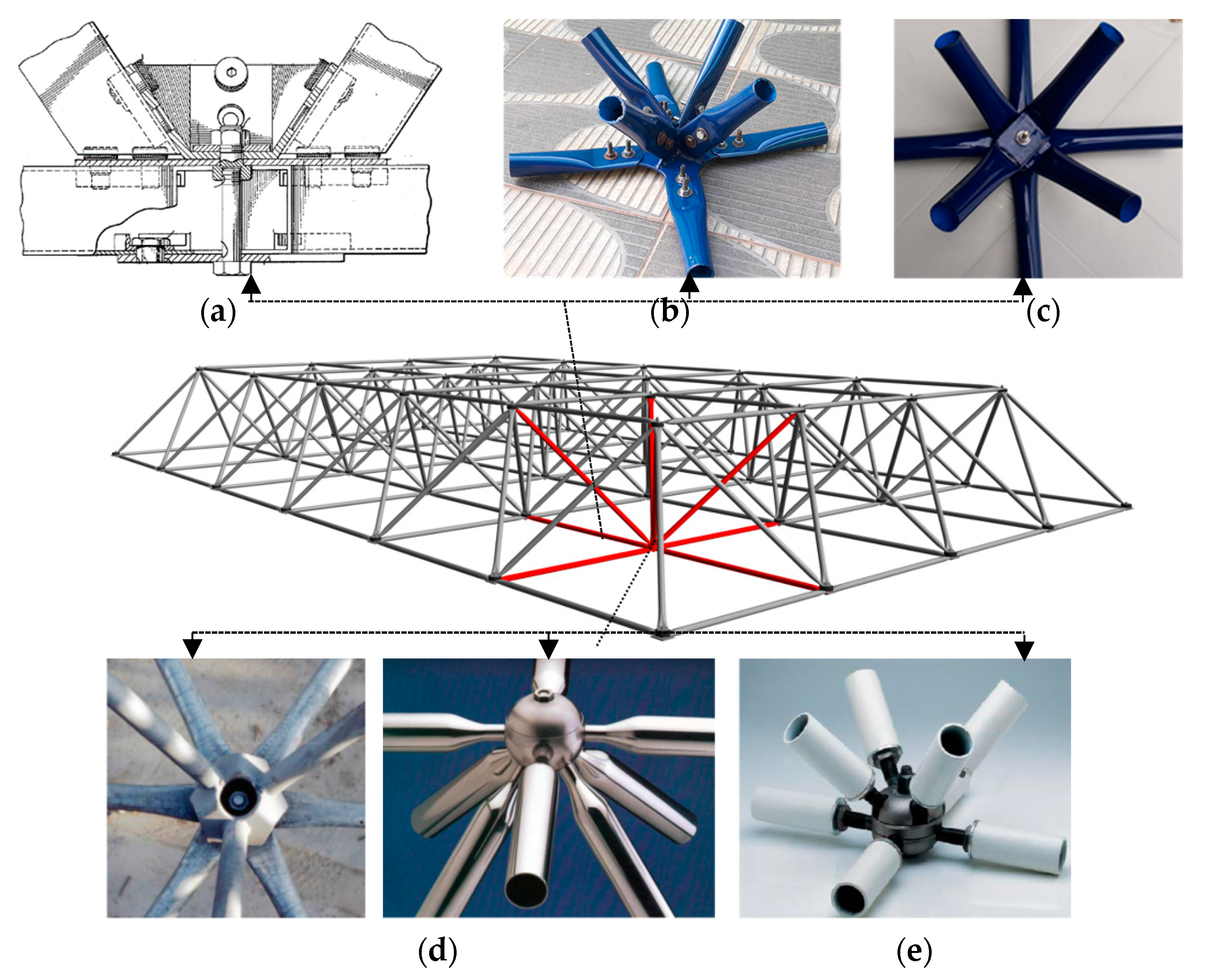
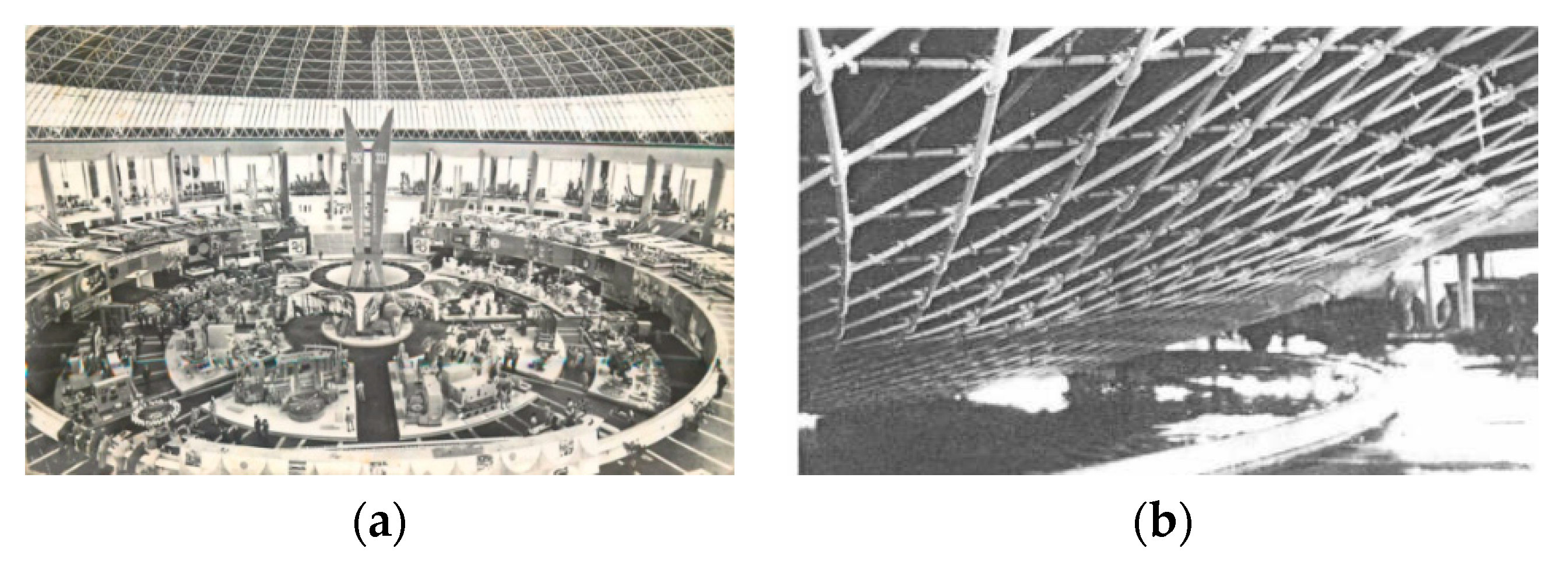
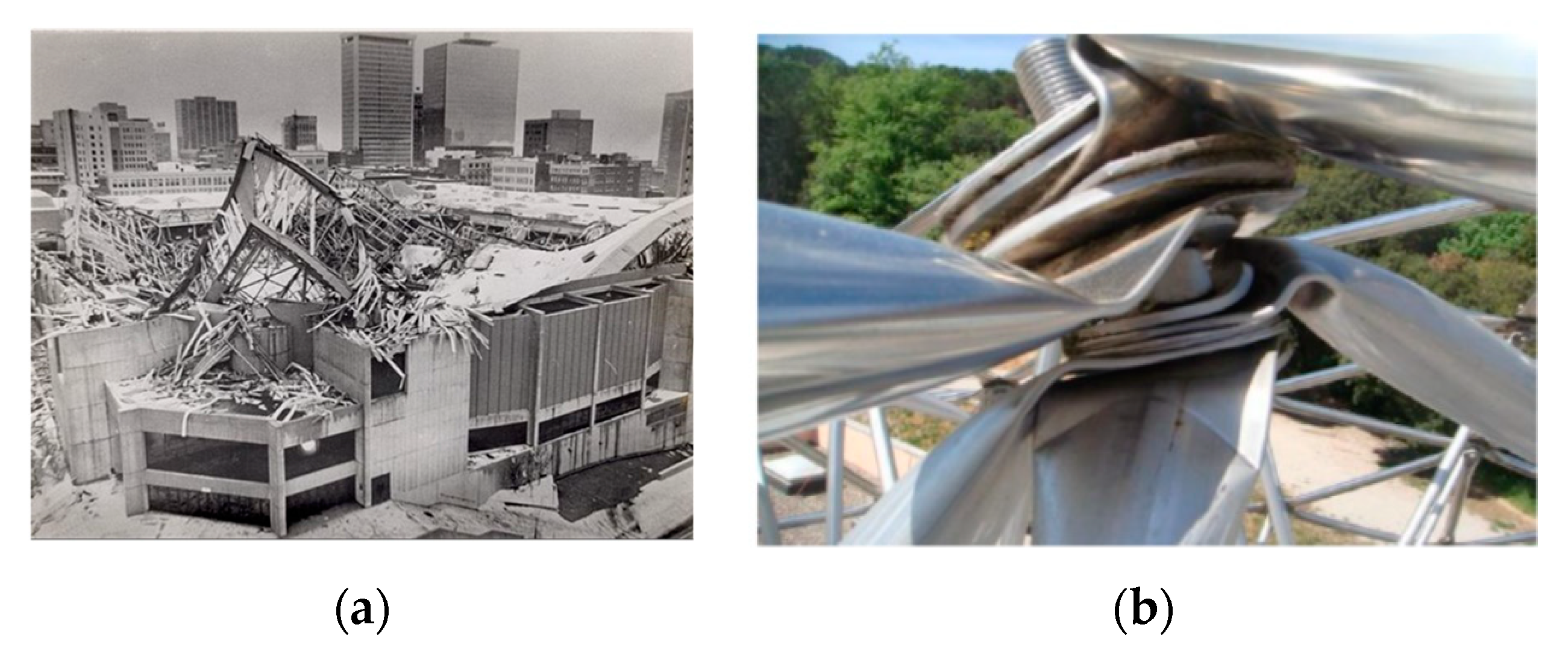

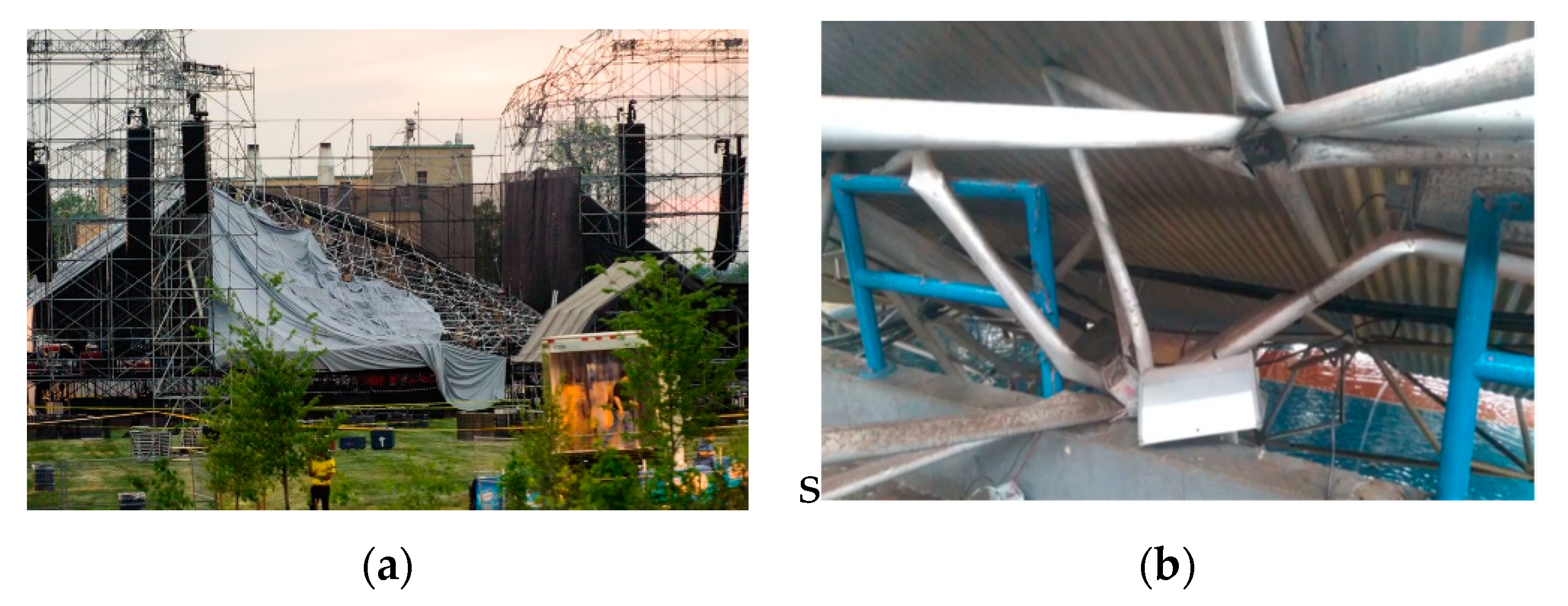
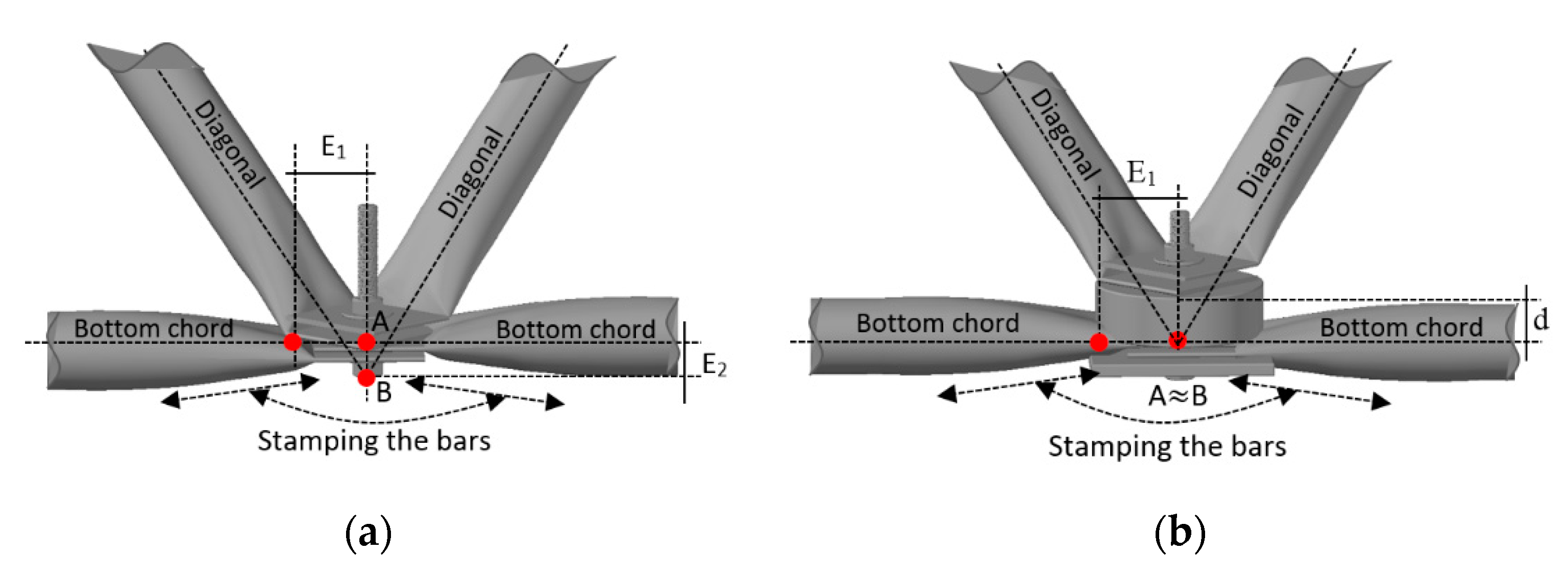



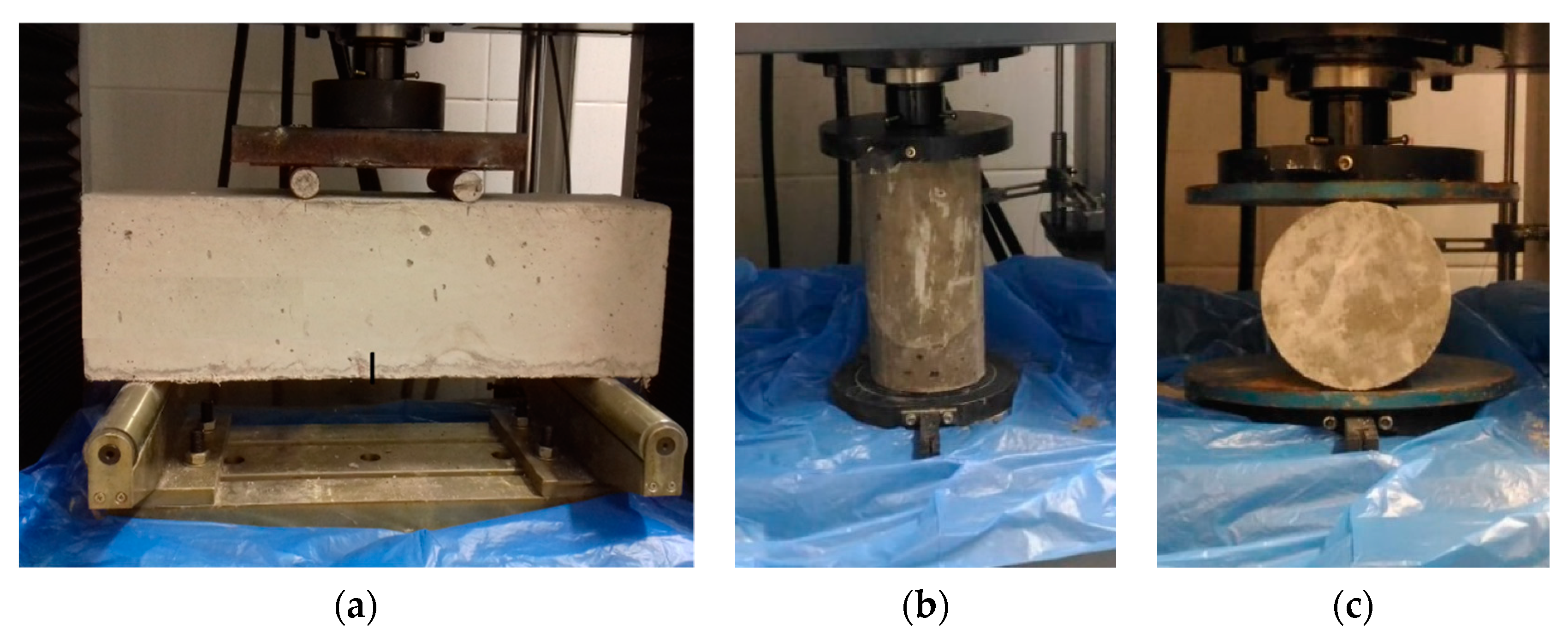

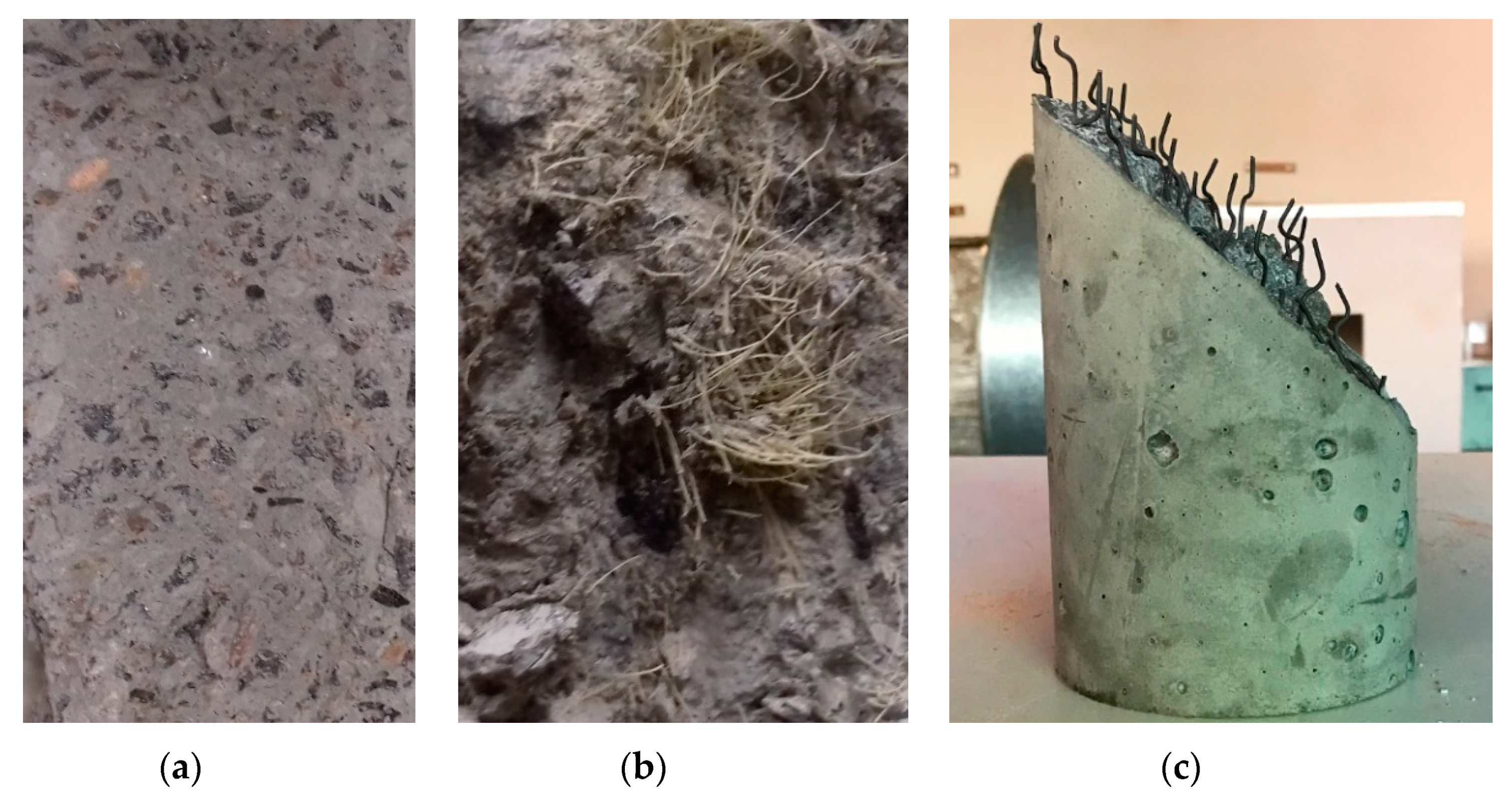
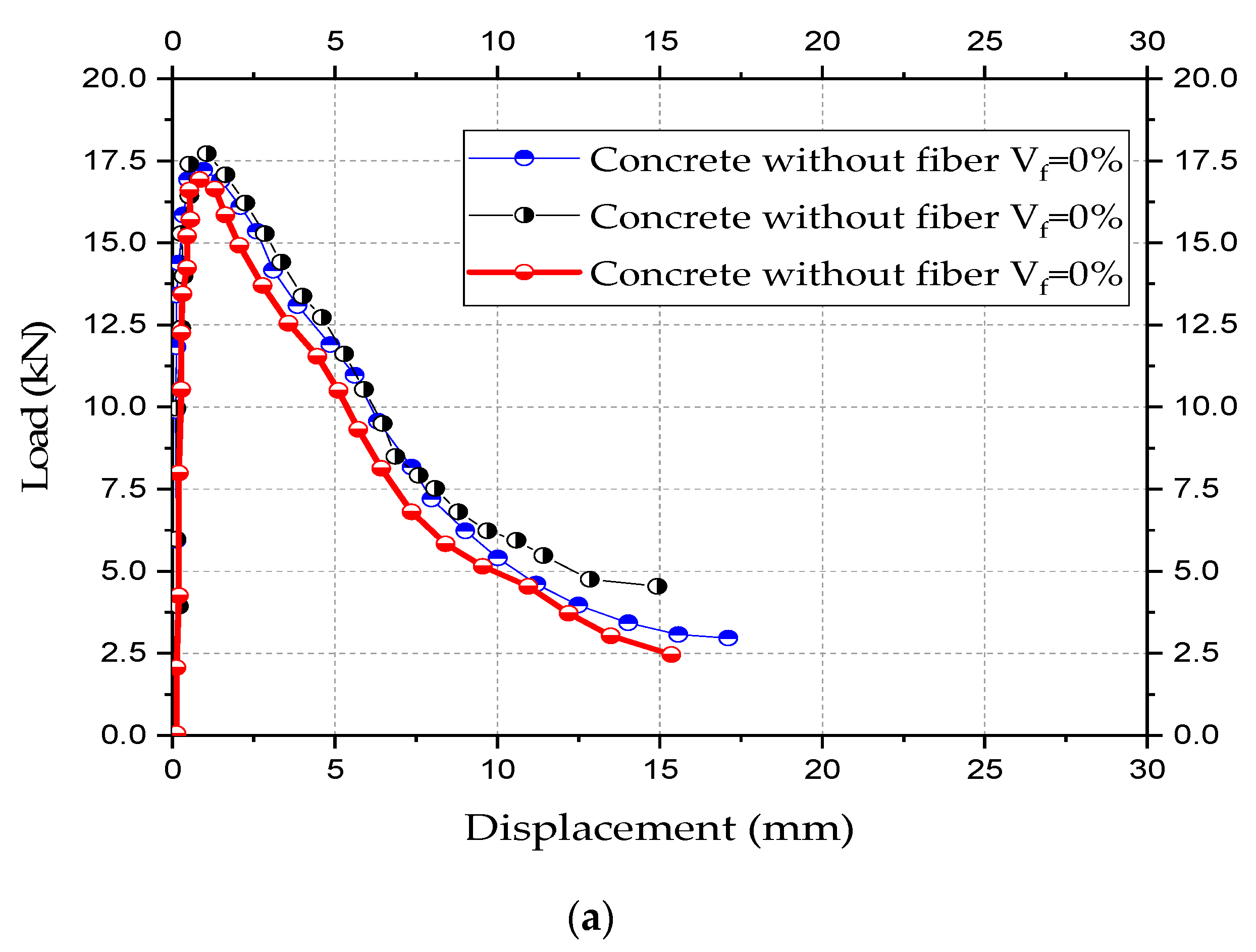
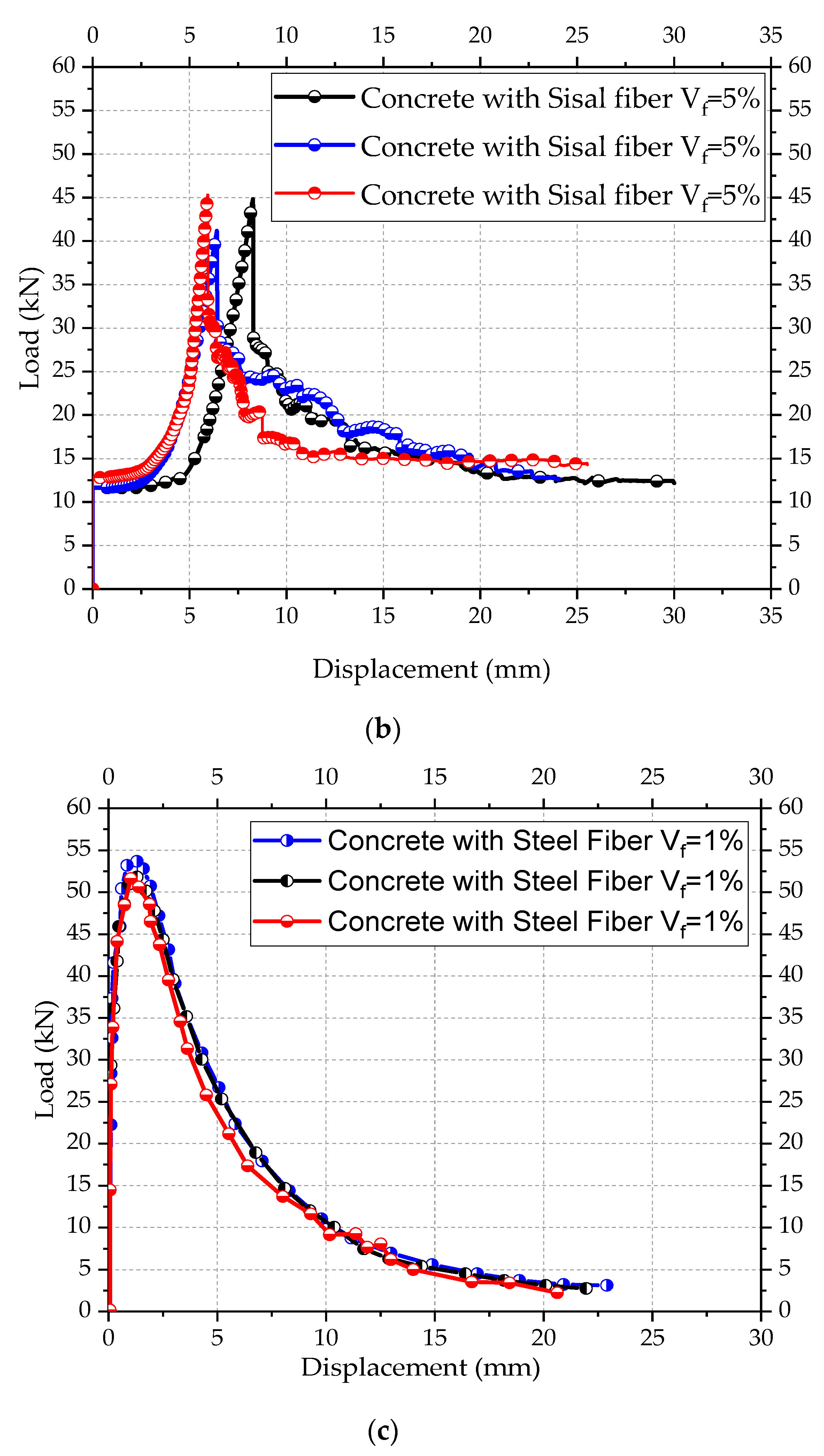




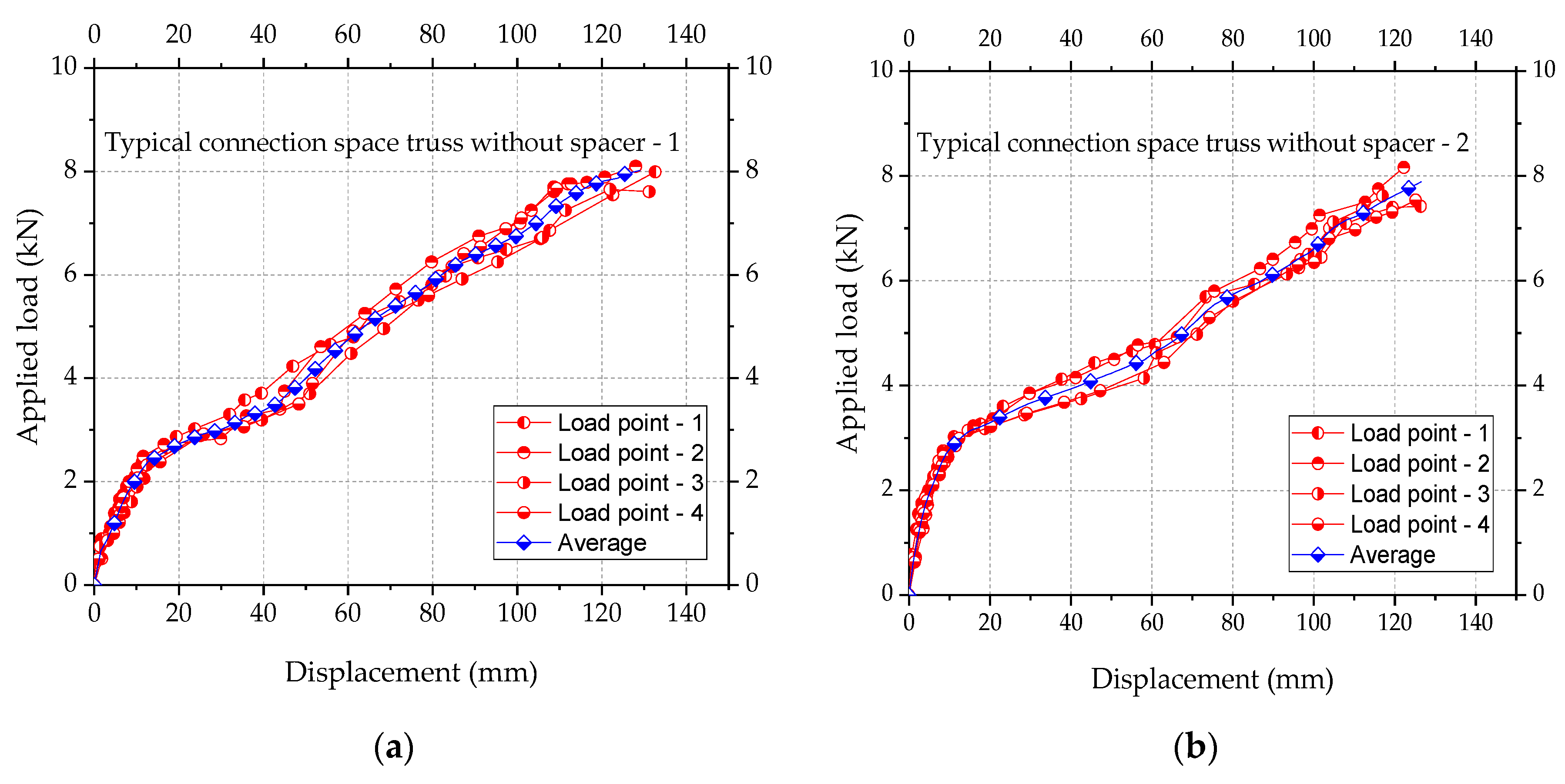
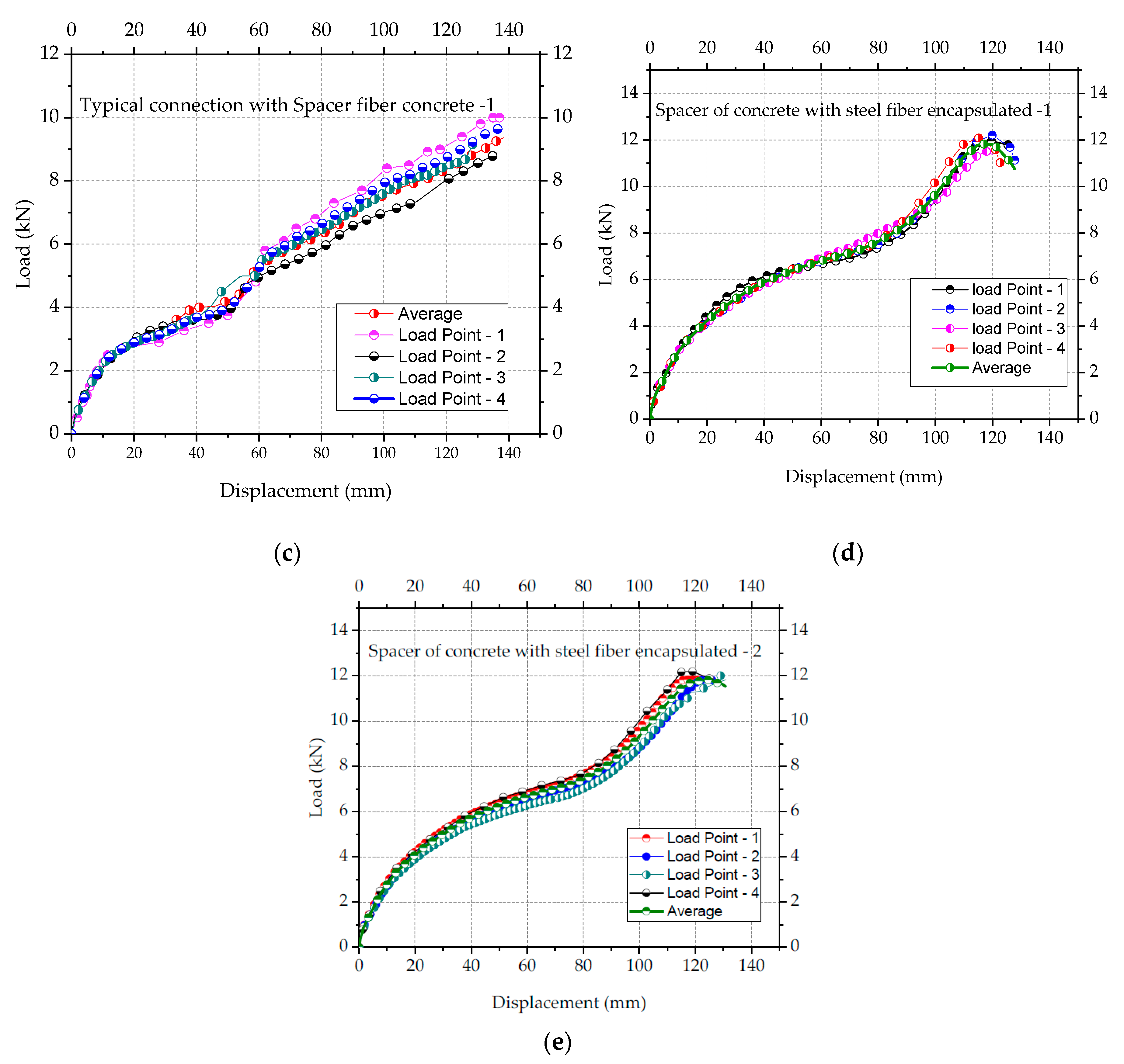

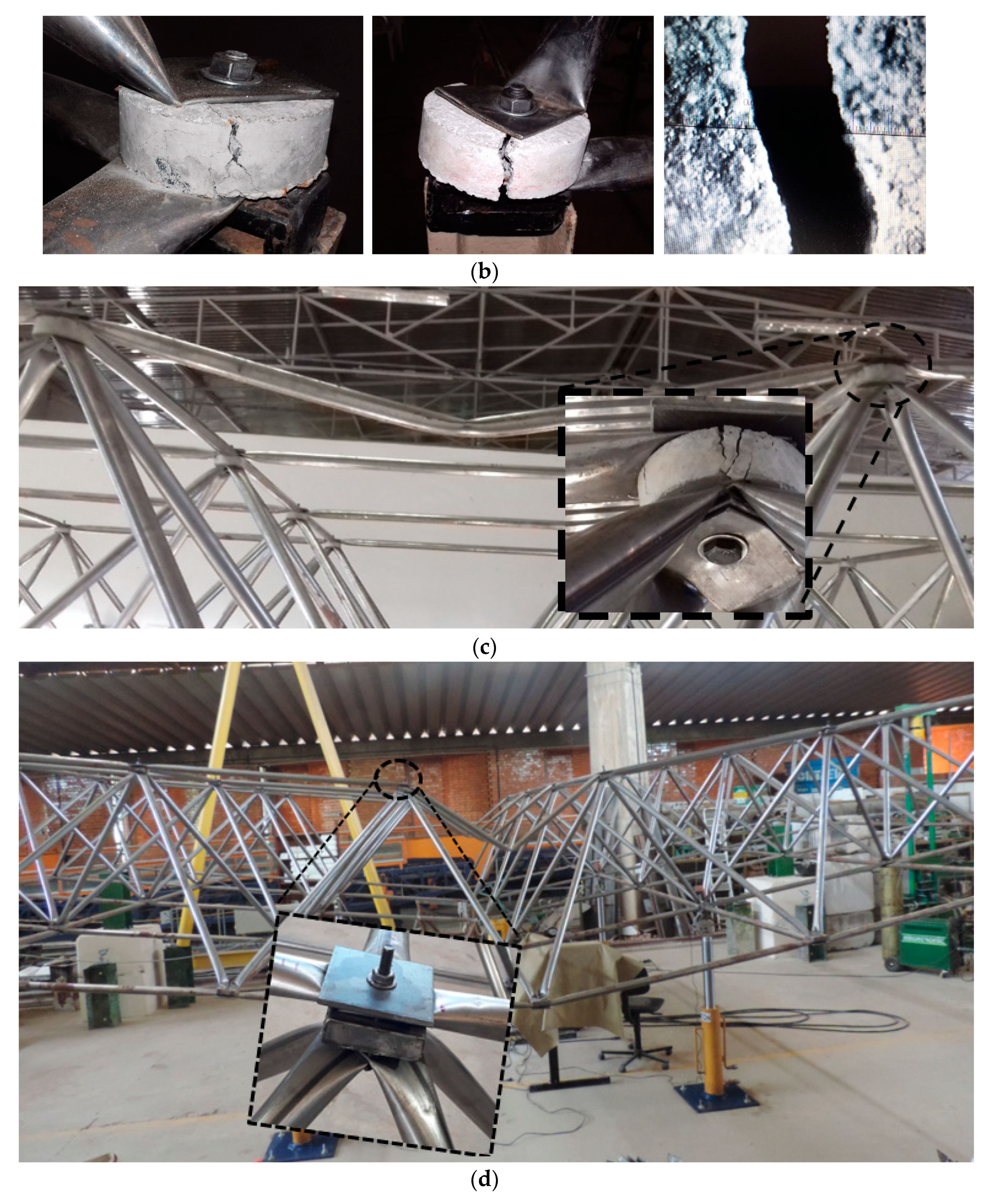
| Main Uses of Fiber in Concrete | References |
|---|---|
| Avoid cracking on industrial floors and pavements; | [89] |
| Application in tunnel coverings with shotcrete; | [90] |
| Prefabricated elements such as concrete tubes and thin-walled concrete; | [91] |
| Structural reinforcement of concrete plates with staple fibers and randomly distributed in the concrete matrix; | [92,93] |
| Behavior of fiber reinforced concrete for controlling the rate of cracking in canal-lining; | [94] |
| Application of fibers in reinforced concrete of columns to improve resistance to seismic actions; | [95] |
| Reinforcement of mortars for masonry execution; | [96] |
| Reinforcement of reinforced concrete beams; | [97,98] |
| Addition of fiber to improve the toughness of the concrete to exposure; | [99,100] |
| Use of mortar reinforced with steel fiber for seismic reinforcement. | [101] |
| Commercial Name | Configuration | Property | Specifications | |
|---|---|---|---|---|
| Values | cov | |||
| New steel fiber | Hooked Ends | Density | 7860 kg/m³ | - |
| Ultimate Strength | 1130 MPa | 0.048 | ||
| Modulus of Elasticity | MPa | 0.077 | ||
| Strain at proportion limit | - | |||
| Poisson´s ratio | 0.28 | - | ||
| Average Length-Lf | 45 mm | - | ||
| Nominal Diameter-Df | 0.50 mm | - | ||
| Aspect ratio (Lf/Df) | 90 | - | ||
| Property of the Sisal Fiber | Values | |
|---|---|---|
| Minimum - Maximum | cov | |
| Length (mm) | 45 mm | - |
| Density (g/cm³) | 0.75–1.07 | 0.021 |
| Tensile strength (MPa) | 227.80–1002.30 | 0.182 |
| Modulus of Elasticity (GPa) | 10.94–26.70 | 0.193 |
| Failure deformation (%) | 2.08–4.18 | 0.175 |
| Water absorption to saturation (%) | 180.00–250.00 | 0.064 |
| Diameter (mm) | 0.08–0.030 | 0.185 |
| Nomenclature | Trace by Weight | Cement APODI (kg/m³) | Sand (kg/m³) | Coarse Aggregate (kg/m³) | Water (l) | Fiber (kg/m³) or (Vf = 1%) |
|---|---|---|---|---|---|---|
| C30 | 1:2.5:2.34:0.50 | 351.26 | 878.15 | 821.94 | 175.63 | - |
| C30SteelFiber | 1:2.5:2.34:0.50 | 351.26 | 878.15 | 821.94 | 175.63 | 78.0 (1%) |
| C30SisalFiber | 1:2.5:2.34:0.50 | 351.26 | 878.15 | 821.94 | 175.63 | 14.52 (1%) |
| Concrete Specimen’s | Compressive Strength | Splitting Tension Strength | Flexural Tension Strength | Modulus of Elasticity | ||||
|---|---|---|---|---|---|---|---|---|
| (MPa) | cov | (MPa) | cov | (MPa) | cov | (GPa) | cov | |
| C30 | 29.87 | 0.46 | 1.62 | 0.018 | 3.67 | 0.020 | 19.79 | 1.53 |
| C30SteelFiber | 31.89 | 0.66 | 2.74 | 0.064 | 3.84 | 0.074 | 20.17 | 1.84 |
| C30SisalFiber | 27.06 | 1.69 | 2.18 | 0.187 | 3.30 | 0.172 | 17.32 | 2.28 |
© 2020 by the authors. Licensee MDPI, Basel, Switzerland. This article is an open access article distributed under the terms and conditions of the Creative Commons Attribution (CC BY) license (http://creativecommons.org/licenses/by/4.0/).
Share and Cite
Silva, W.V.; Silva, R.; Bezerra, L.M.; Freitas, C.A.S.; Bonilla, J. Experimental Analysis of Space Trusses Using Spacers of Concrete with Steel Fiber and Sisal Fiber. Materials 2020, 13, 2305. https://doi.org/10.3390/ma13102305
Silva WV, Silva R, Bezerra LM, Freitas CAS, Bonilla J. Experimental Analysis of Space Trusses Using Spacers of Concrete with Steel Fiber and Sisal Fiber. Materials. 2020; 13(10):2305. https://doi.org/10.3390/ma13102305
Chicago/Turabian StyleSilva, Welington V., Ramon Silva, Luciano M. Bezerra, Cleirton A. S. Freitas, and Jorge Bonilla. 2020. "Experimental Analysis of Space Trusses Using Spacers of Concrete with Steel Fiber and Sisal Fiber" Materials 13, no. 10: 2305. https://doi.org/10.3390/ma13102305
APA StyleSilva, W. V., Silva, R., Bezerra, L. M., Freitas, C. A. S., & Bonilla, J. (2020). Experimental Analysis of Space Trusses Using Spacers of Concrete with Steel Fiber and Sisal Fiber. Materials, 13(10), 2305. https://doi.org/10.3390/ma13102305





